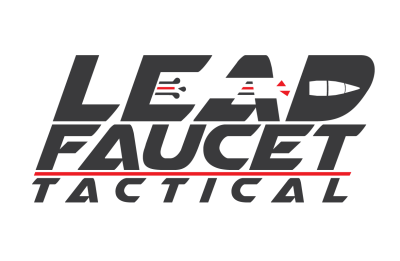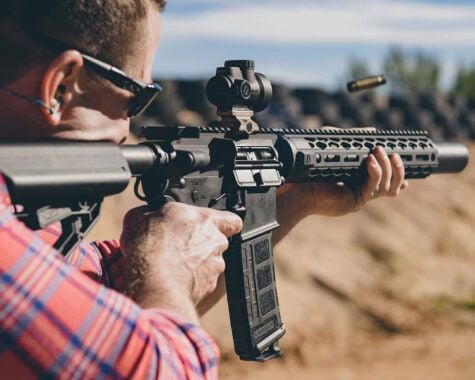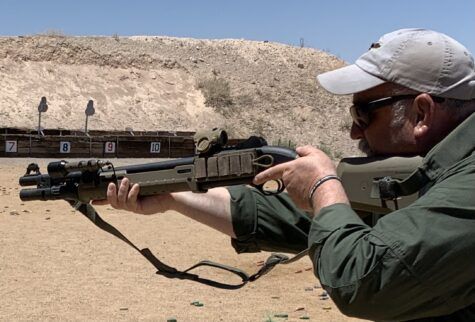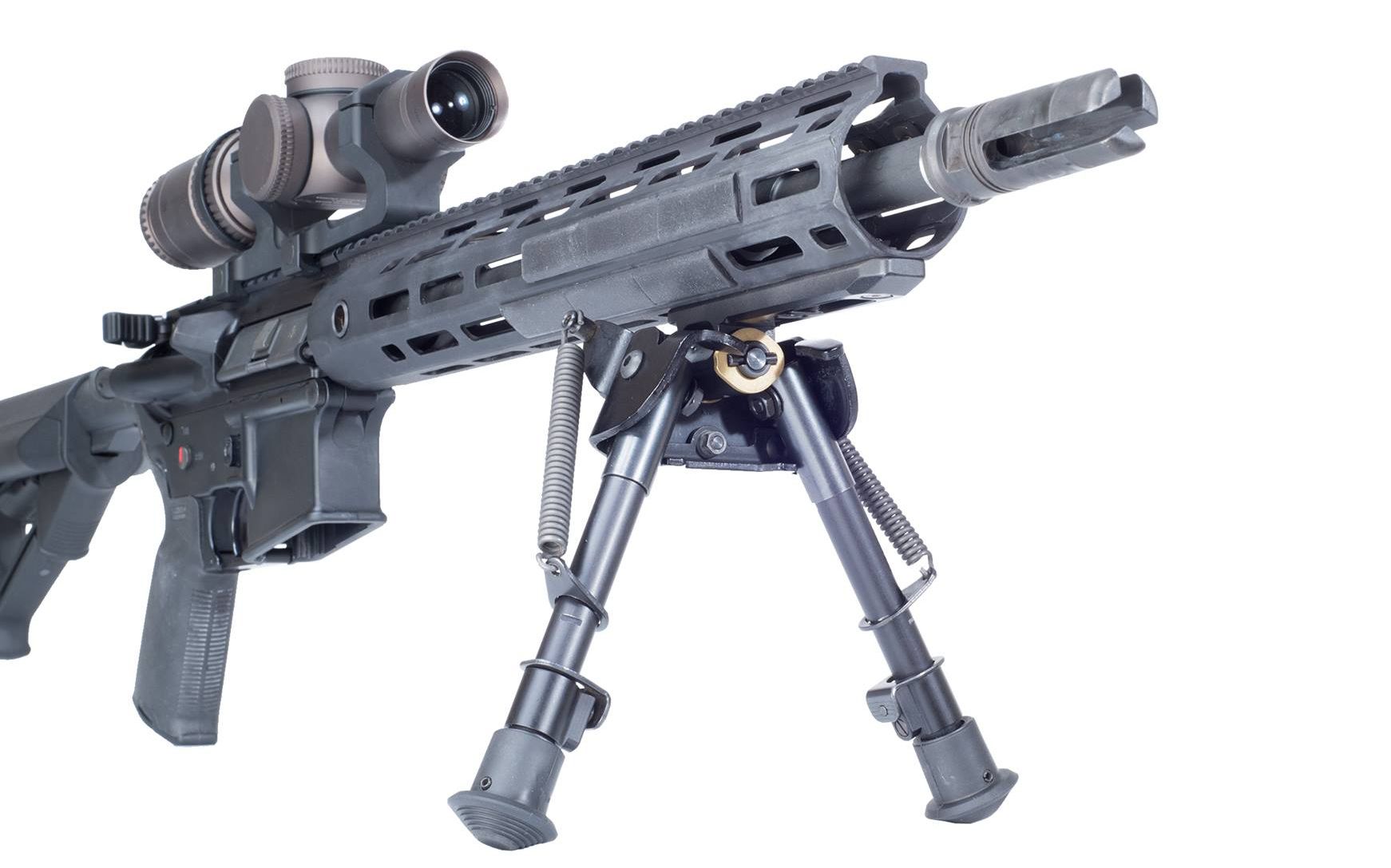
In May 2020, we sat down with Dan Brokos of Lead Faucet Tactical to discuss how he was spending his time during the pandemic, and talk about his recent partnerships with Trijicon and OSS Suppressors. We discussed keeping your skills sharp during an ammo shortage, what new gun owners need to know, and why he sometimes likes to run a simple RMR on his AR.
Q: Dan, can you tell us how you’ve been spending your time over the past few months?
Dan Brokos – Lead Faucet Tactical: I’ve been occupying my time participating in a few live events for Recoil…one on the industry’s overall state and one on kit. Recoil also flew out to my farm, and we shot videos for several days.
Thankfully, I have been fortunate enough to shoot whenever I want, as I have my own range out here. I’d have preferred to be out on the trail, but it was actually pretty good personal time for me. It was an early summer vacation.
Q: While you were at home, many folks were buying ARs, scrambling to get them set up in a way that made sense. Sitting at home for an extended period, did you reconsider any of the ways you had your home defense firearms configured?
Dan Brokos – Lead Faucet Tactical: Setups on my ARs have not changed much over the years. That said, I do look at other configurations that are out there. Instead of overanalyzing setups that I know work for me, I prefer to spend that time tinkering around with future product development of what’s going on with pistol and carbine accessories, and also nylon. That’s what I’ve spent most of my time on. I also spent some time finally cleaning my blasters too…most of them, anyway. (laughs).
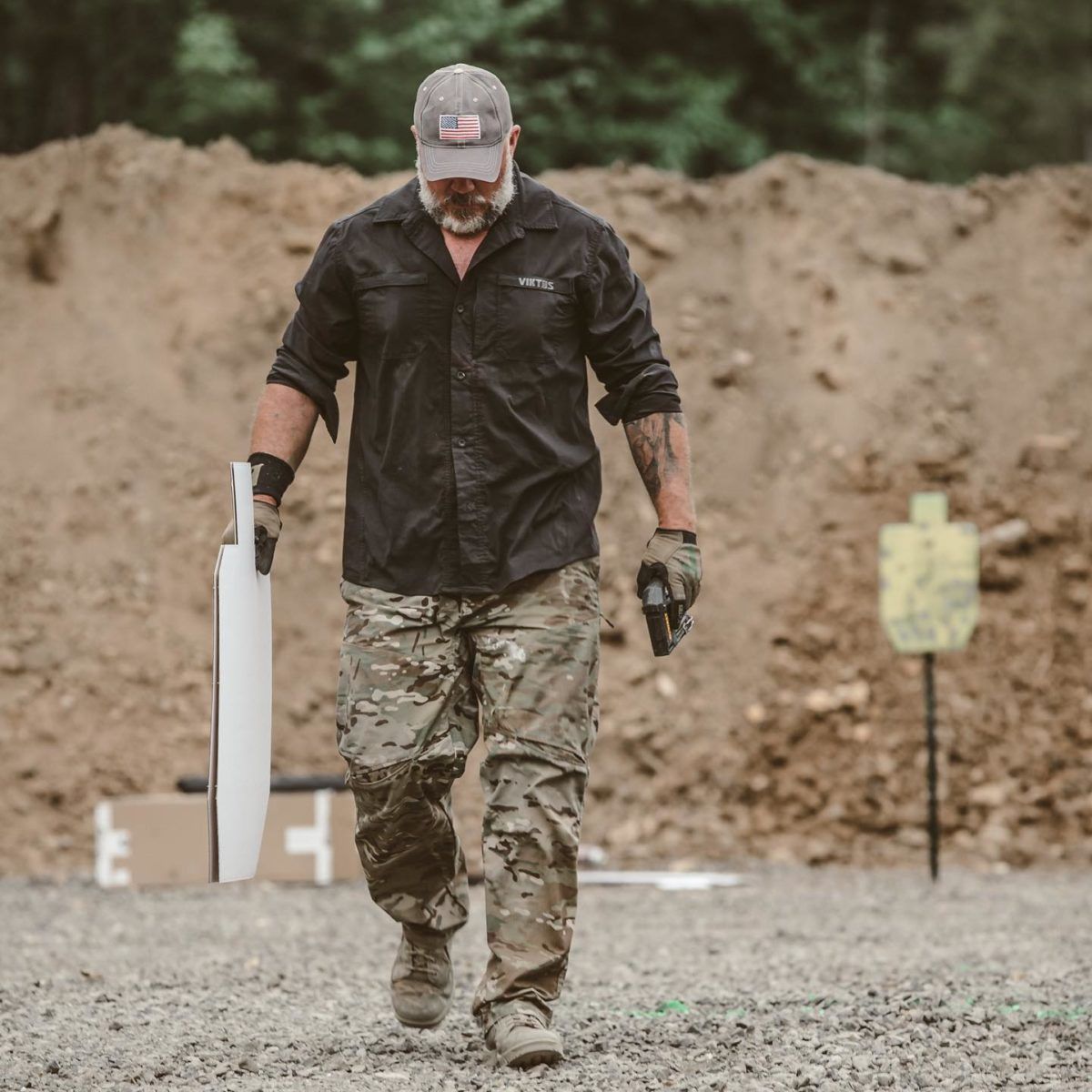
Q: With many people still locked down and with ammo increasingly hard to come by, are there things we can do to prepare and stay busy?
Dan Brokos – Lead Faucet Tactical: Since the last time we spoke, the amount of new gun owners out there is phenomenal. I’ve gotten so many emails from folks simply asking about pistols. They tell me they’ve never owned a gun before and don’t know what to do. There’s a lot of that. I would say that if you don’t have a range…I believe in Airsoft as an excellent dry fire technique. There’s a lot of good Airsoft pistols out there. I set up a little 5″ IPSC cardboard target, and I can shoot in my backyard, basement, or living room. I put a few books behind the targets, and I’m good-to-go.
Q: I see a lot of celebration about people buying their first guns…and how great it is that there’s more guns out there….can you talk about how that firearm is just one piece of the puzzle?
Dan Brokos – Lead Faucet Tactical: I think it’s great, but hopefully, these people who are buying these guns will go out to a class and take that firearm to the range. Ideally, they realize that in addition to their use for protection, shooting is fun. It’s potentially a unique opportunity for those who were on the other side or were on the fence to swing towards being Pro 2A. But I agree with you that just having new gun owners does not mean much by itself. The hope would be that they could turn that ownership into a way of life.
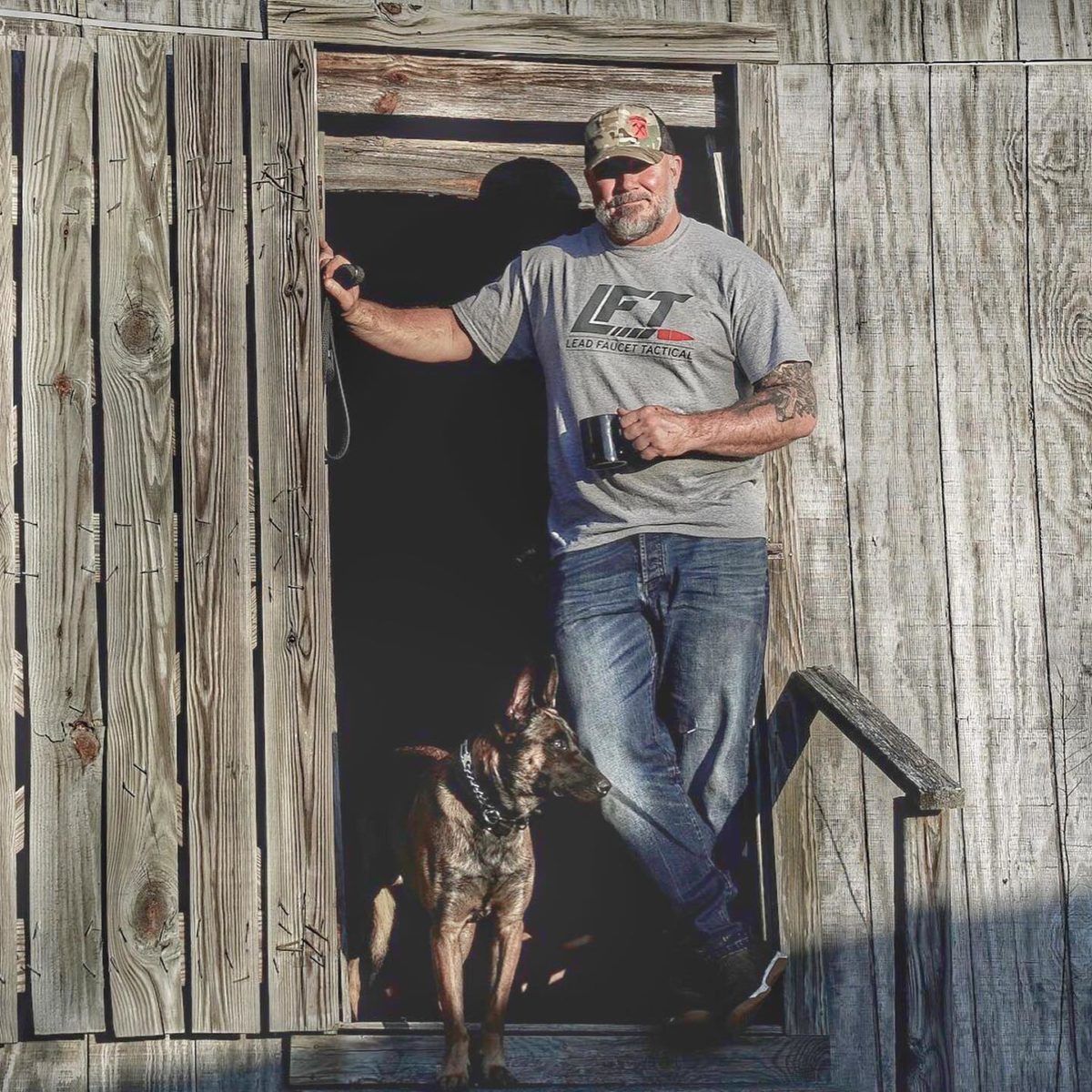
To your readers, I would say that if you see someone like what we’re discussing, perhaps take the opportunity to try to help them out. The last thing we want to do is be discouraging. It comes second nature to those of us who have been around guns for most of our lives, but that is just not the case for others.
I think that we need to be polite and be professional. Our goal is to make these guys come to our side, not just on owning a gun, but on our rights, beliefs, and way of life.
It’s also important to instill the idea that this is a thinking man’s game. It’s a huge responsibility to be a gun owner. There are so many possible contingencies. You need to make sure that the first time you’re thinking about something is not as it is actually happening to you. There are essential things you need to have thought about. If you have to actually use this gun to save someone’s life, could you?
It’s not an easy situation. Do you have the mindset to do what needs to be done? Furthermore, are you sure you are using the gun for the right reason? I think to develop, it’s essential to get out there and shoot and take some classes before you’re in a situation where you might have to use a firearm for real-world purposes.
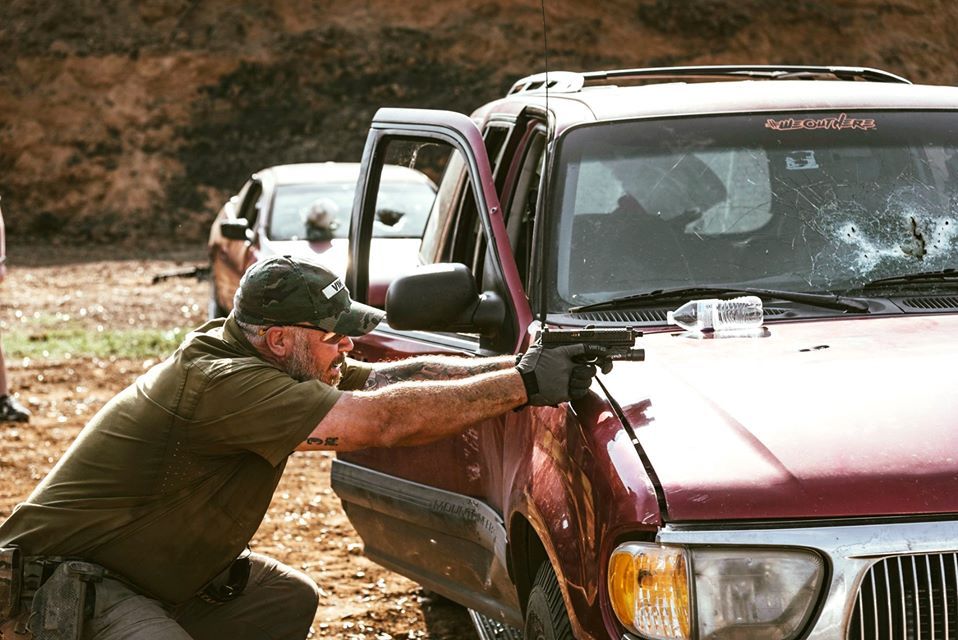
Q: You’re working with OSS now, can you talk a bit about why you’d recommend a suppressor?
Dan Brokos – Lead Faucet Tactical: I think suppressors are ideal for home defense. Realistically speaking, who will wake up due to that bump in the night, grab their gun and take the time to put on ear protection? No one is going to do that. It’s so important to be able to hear in a situation like that. Furthermore, the ability to discriminate between shots fired and your shots is enormous.
Try shooting a weapon with no suppressor and no ear protection while someone is firing back at you. It’s very tough to tell where it is coming from. Suppressors are just a huge benefit. For my family, if they’re locking down, it’s going to be with a pistol and a suppressed AR.
As far as why OSS, it’s like their saying…blowback blows. With OSS, it’s all going out the front. At the end of a day of shooting, you don’t have black soot all over your face. To me, safety is essential. I’ve been at the forefront of lead testing in the SOF community before I retired. I know what suppressors are doing when they are blowing that stuff back on you. You are almost doubling the amount of toxic metals you are ingesting when you are running a suppressor. OSS cans; when we first started fucking with them, they were not doing that at all. We saw that they were on to something. All the gas gets pushed out the front.
Q: Since we last spoke, I know you’ve also partnered with Trijicon. Can you speak to folks about the importance of getting an optic on a rifle you’re going to use for home defense?
Dan Brokos – Lead Faucet Tactical: When it comes to Trijicon, I will say that I’ve been running a simple RMR on my carbine for a long time. The field of view is phenomenal…just the way it is designed and set up, my peripheral vision is really great with them. It’s so small, it has a square face, and my eyes don’t get sucked into it. I don’t feel like I am looking through a Mcdonald’s straw. They are small, lightweight, and perfect for a vehicle. When I’m traveling around, that’s what my AR has on it. They are also on my home defense ARs. These things are also torture-tested and beat to death.
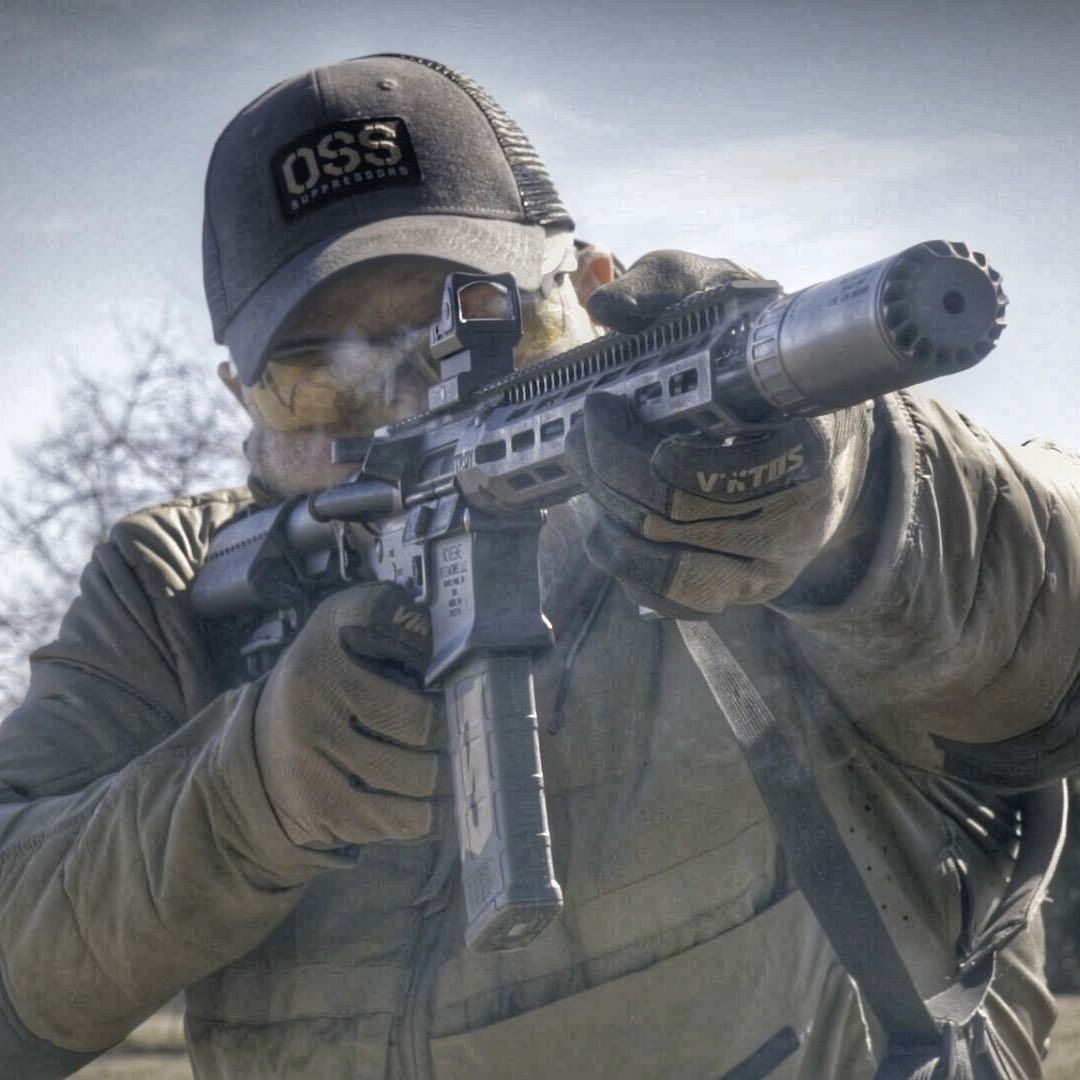
Q: I think a lot of readers feel that the RMR is more for a pistol. Do people see you with an RMR on your carbine and find that odd?
Dan Brokos – Lead Faucet Tactical: You’re right. People will look at me and ask me why do I have that RMR on a carbine. I get puzzled by that and ask them what they mean… It’s a red dot. It’s proven. It’s rugged and has had the shit beat out of it. People are putting them on short guns…why can I not put one on a long gun? I get your point, but it’s just as durable as anything else out there.
Trijicon also has a new MRO HD and it’s a much better optic than the original MRO as far as how it is built. There is much more clarity in the dot. The magnifier is also excellent, allowing you to get a bit of extended range with the dot.
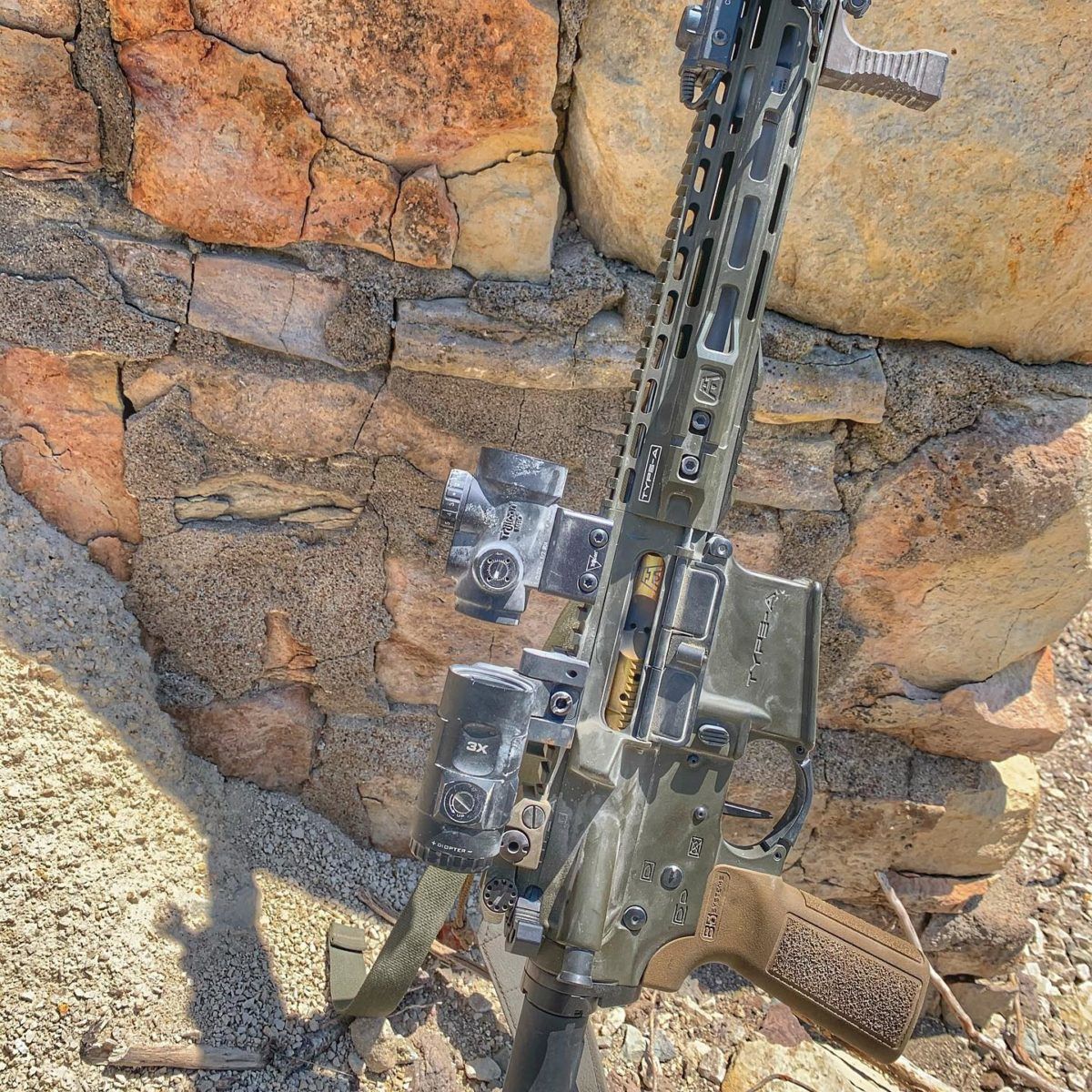
As far as other Trijicon optics I enjoy…Their ACOGs have been around, but they have a Mini ACOG that I now have many hours behind, and I really, really like it. It has no battery yet is super bright. At 1.5x, it can be a little tricky. Still, I’ve found through experiences in courses that it is a wonderful optic for shooters who have eye astigmatism or for those who have problems picking up their red dot when they are in unconventional positions.
Finally, another optic that I really love is the Trijicon Credo. It’s great to finally see a 1-6 and a 1-8 from them designed for military and law enforcement.
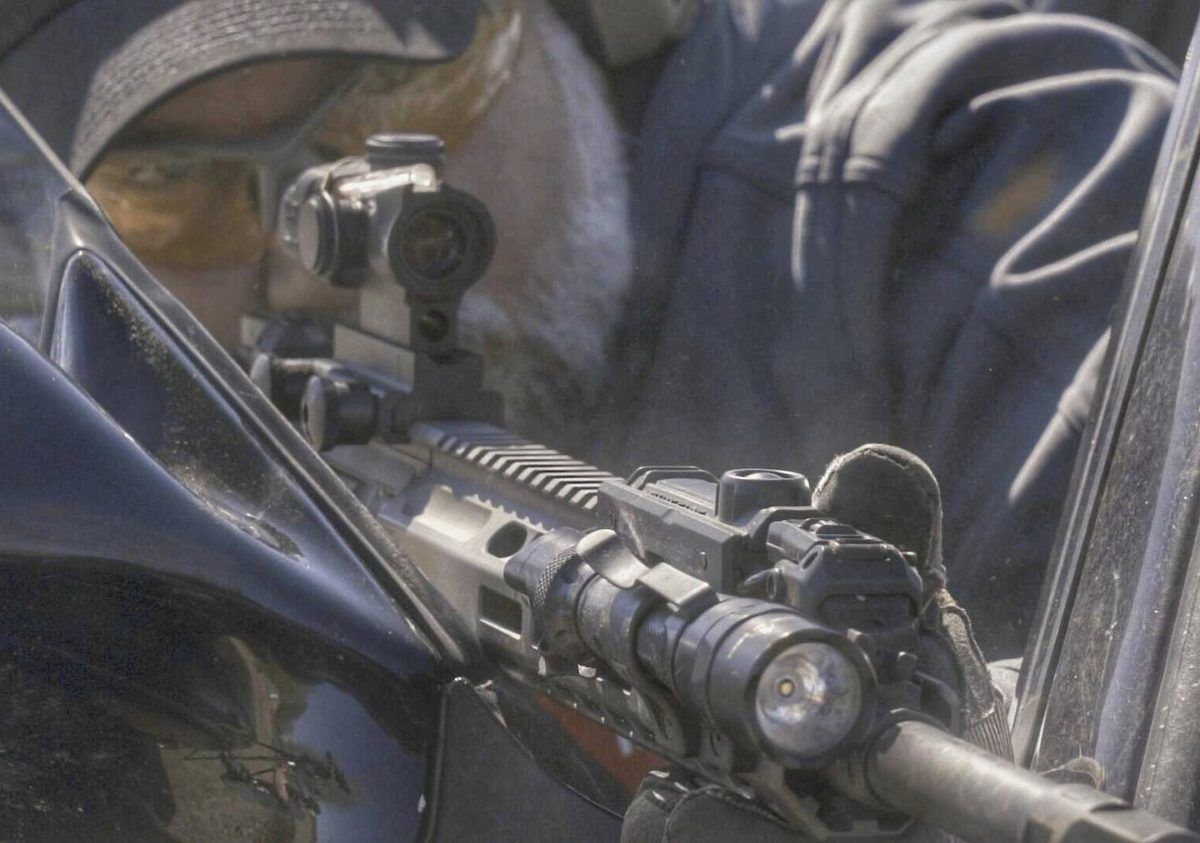
Q: How does one decide which to choose…something like an MRO red dot, or a magnified optic like the Credo?
Dan Brokos – Lead Faucet Tactical: If I was on a desert island, I will go with an LPVO like the Credo. But for the average guy, I think that person will be good-to-go with a red dot optic. From 0-200 meters, there is a reason they are so popular. They are affordable and easy to shoot. Once you have become comfortable with a red dot, it might be a good thing to consider something like an LPVO.
I have added several LPVO classes to my training schedule this year because I see more and more people buying them. I can teach students how to mount them, make the optic level in the mount, how to zero, and adjust. We go over the reticles and learn about the differences. We start with the basics. Then we go out and shoot close and far.
We go out to 600 meters, but we also come in close. It’s vital to train with these LPVOs often. I have noticed that once students get into awkward positions, they want to revert back to a red dot as they find the reticle is hard to pick up. I tell them that they have to push through that. Put it on 1x and fight through it. Over time and with practice, it can become almost as quick as your red dot in close, but then you can also be effective at long range. There’s just a learning curve that shooters new to LPVOs need to be aware of.
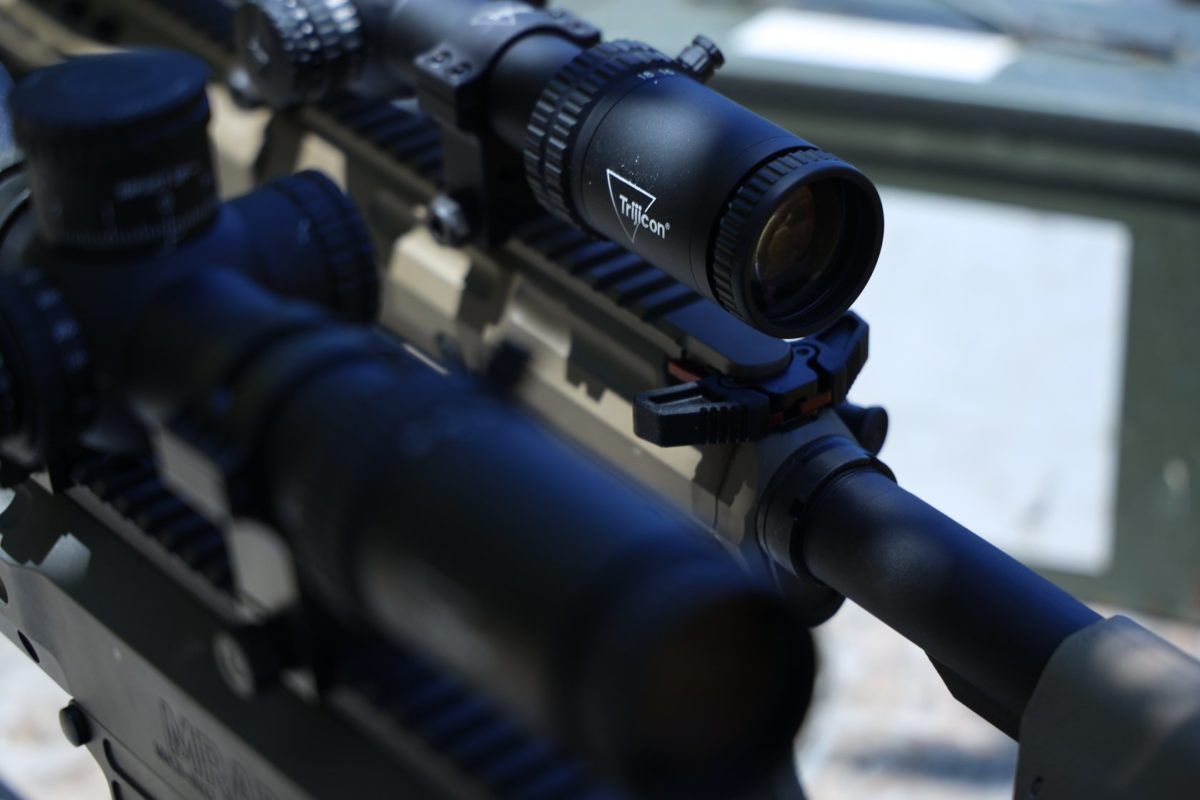
If you’re new to LPVOs, perhaps you’ve read about them and decided to swap out your red dot for one, there are some things you need to know about…For example, you need to understand what parallax is. Most LPVOs also have diopters at the rear that need adjusting. But like I said earlier, I think the biggest thing is that people discount these LPVOs for close range, shooting around cover, and shooting from awkward positions. Doing that really does take some time and practice. Just don’t toss an LPVO on your AR and expect that you will be just as good and as fast as you are with your red dot. That’s going to take time and practice. There is a considerable advantage to be had, but you have to put in the work. Don’t forget that.
###
